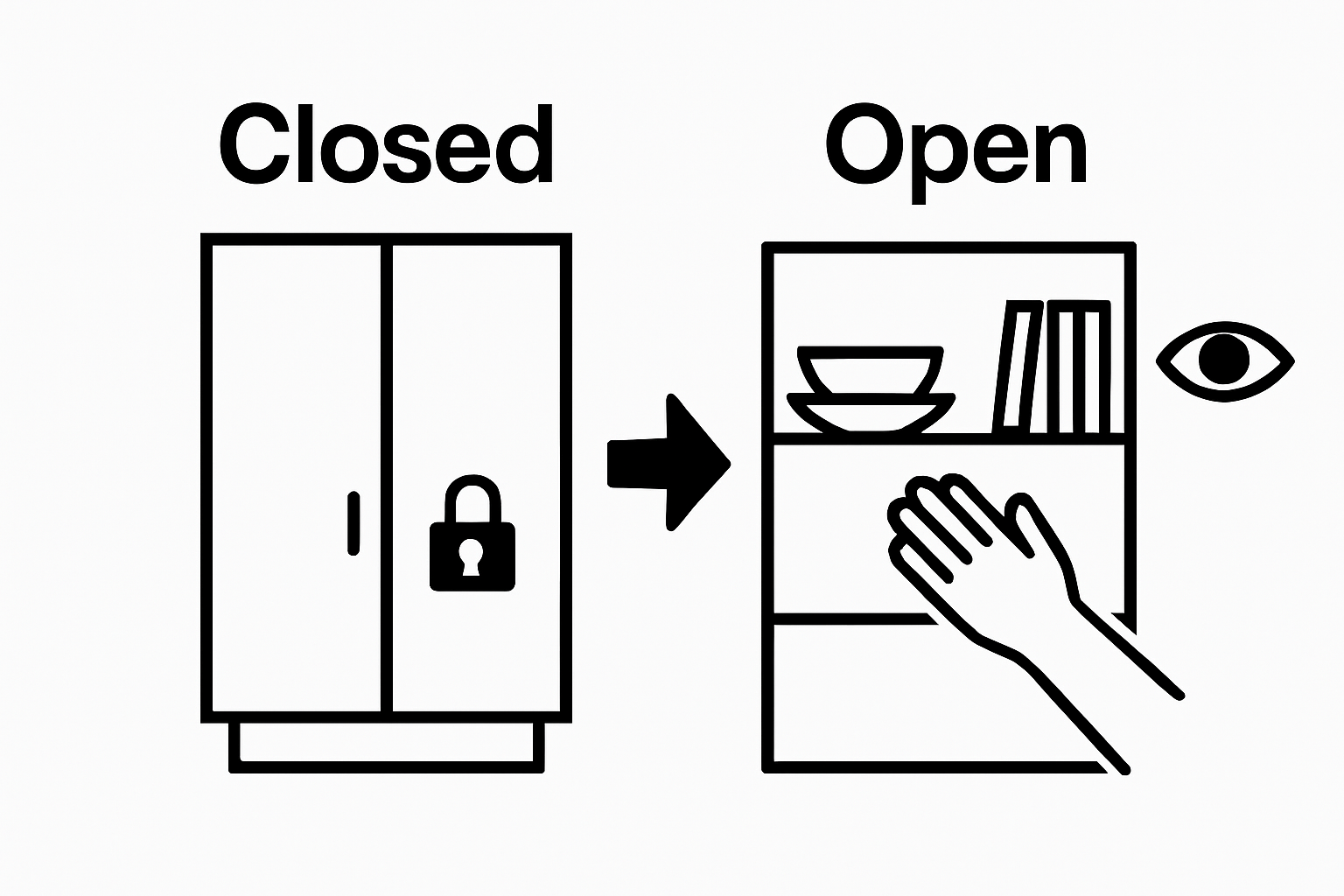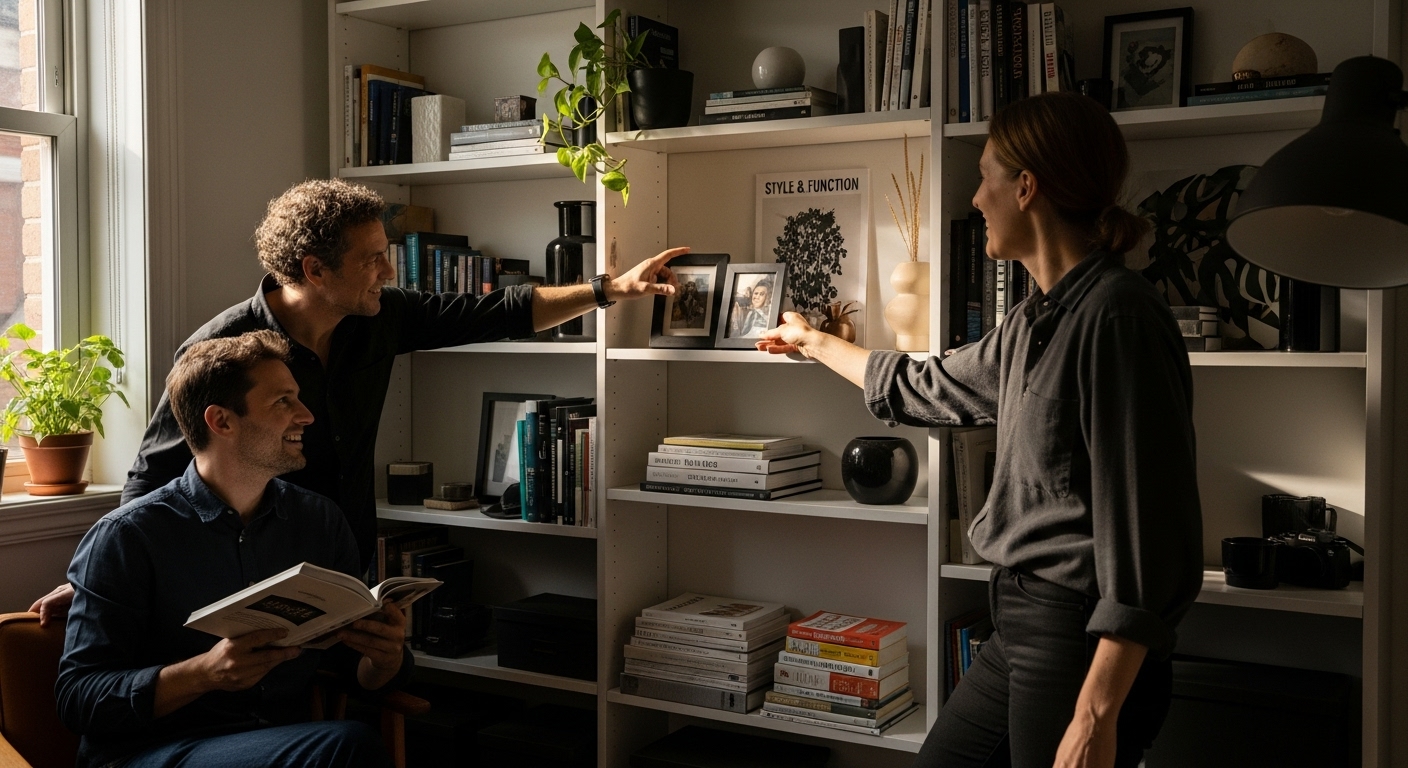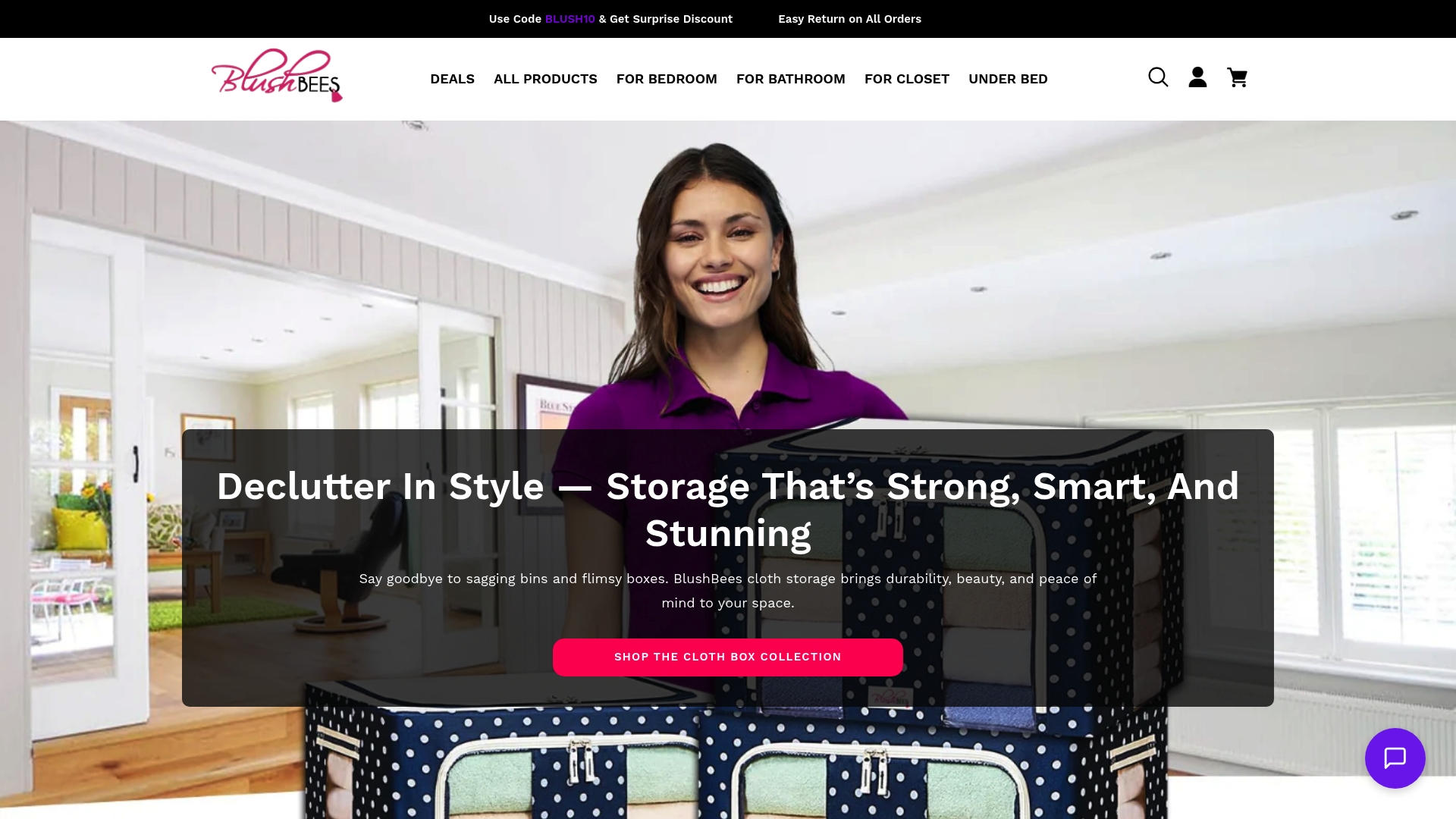
Open shelving is changing how people think about storage and style in their homes. Some designers say it can actually make small rooms feel larger and lighter. In fact, research shows open shelving can give the illusion of expanded space in compact homes. Most would expect storage to be about hiding things away but this approach is all about keeping everything on display and turning your belongings into décor.
Table of Contents
- Defining Open Shelving: An Introduction To The Concept
- The Importance Of Open Shelving: Benefits For Modern Homes
- How Open Shelving Works: Design, Functionality, And Usage
- Key Concepts Behind Open Shelving: Styles And Materials
- Real-World Applications: Where Open Shelving Fits In The Home
Quick Summary
| Takeaway | Explanation |
|---|---|
| Open shelving enhances visual accessibility | Items are displayed openly, allowing immediate access and organization without barriers. |
| It creates a sense of spaciousness | Open shelving can make smaller rooms feel larger and more airy by removing visual barriers. |
| Versatile applications throughout the home | Open shelving can be effectively used in kitchens, living rooms, and home offices, offering stylish storage solutions. |
| Choosing the right materials and styles matters | Different materials and styles can greatly influence the durability and visual appeal of open shelving. |
| Encourages mindful curation and design expression | Open shelving allows homeowners to showcase personal items while maintaining functional organization. |
Defining Open Shelving: An Introduction to the Concept
Open shelving represents a contemporary storage solution that transforms traditional closed storage approaches by eliminating cabinet doors and presenting items in a visually accessible manner. This design philosophy goes beyond mere functionality, creating an opportunity to showcase personal style while maintaining practical organizational principles.
The Fundamental Concept of Open Shelving
At its core, open shelving is a storage method where items are displayed on exposed shelves without concealing barriers like doors or drawers. According to the Library of Congress classification, open shelving fundamentally relates to direct accessibility and visual transparency in storage systems.

Key characteristics of open shelving include:
- Unobstructed visibility of stored items
- Direct and immediate access to objects
- Potential for decorative and functional display
- Versatility across multiple spaces like kitchens, living rooms, and home offices
Design and Practical Applications
Open shelving transcends traditional storage by blending aesthetic appeal with organizational efficiency. Whether mounted on walls or integrated into existing furniture, these shelves provide homeowners with flexible solutions that can adapt to various design preferences and spatial constraints.
For those interested in exploring more creative storage options, read our guide on stylish storage solutions that can transform your living spaces. The approach allows individuals to curate their storage in a way that reflects personal taste while maintaining practical utility.
By removing physical barriers between stored items and the viewer, open shelving creates a sense of openness and intentionality in home design. It encourages mindful organization and turns everyday storage into an opportunity for personal expression and visual storytelling.
The Importance of Open Shelving: Benefits for Modern Homes
Open shelving has emerged as a transformative design strategy that addresses both aesthetic and functional needs in contemporary home environments. By reimagining storage as a visual and practical element, these shelving solutions offer homeowners unprecedented flexibility in organizing and presenting their living spaces.
Visual Openness and Spatial Perception
According to architectural design research, open shelving creates an illusion of expanded space by eliminating visual barriers and promoting a sense of airiness. This design approach is particularly powerful in smaller homes or apartments where traditional closed cabinetry can make rooms feel cramped and restrictive.
Key spatial benefits include:
- Enhanced perception of room size
- Improved natural light circulation
- Reduced visual weight in interior design
- Seamless integration with multiple decor styles
Functional Advantages of Open Storage
Beyond aesthetic appeal, open shelving provides practical advantages that traditional storage methods cannot match. Homeowners gain immediate access to frequently used items, creating a more efficient and intuitive organizational system. For more insights into smart storage solutions, explore our comprehensive guide on maximizing home organization.
The versatility of open shelving allows for dynamic display and easy reconfiguration. Whether in kitchens, living rooms, or home offices, these shelves enable individuals to curate personal collections, showcase decorative items, and maintain a clutter-free environment with minimal effort.
By embracing open shelving, homeowners transform storage from a purely functional necessity into an opportunity for personal expression and design creativity. The approach encourages mindful curation, promotes visual clarity, and supports a more intentional living environment.
How Open Shelving Works: Design, Functionality, and Usage
Open shelving represents an innovative storage approach that transforms traditional enclosed storage systems into dynamic, visually engaging solutions. By understanding its fundamental design principles and implementation strategies, homeowners can effectively integrate these versatile storage elements into various living spaces.
Structural Design and Material Considerations
According to the Library of Congress classification, open shelving systems are characterized by their direct accessibility and visual transparency. The structural design typically involves mounting horizontal platforms supported by vertical brackets or integrated into existing wall structures, creating a clean and minimalist storage environment.
Key structural elements include:
- Sturdy wall mounting hardware
- Adjustable depth and width configurations
- Material options like wood, metal, glass, and composite materials
- Weight capacity and load distribution mechanisms
Practical Implementation and Usage Strategies
Successful open shelving implementation requires strategic planning and thoughtful organization. Homeowners must consider factors such as item weight, visual balance, and functional accessibility when designing their storage spaces. For comprehensive organization strategies, explore our guide on smart storage solutions.
Effective usage involves creating intentional displays that balance aesthetic appeal with practical storage needs. This might include grouping items by color, size, or functional category, ensuring that the shelves remain both visually pleasing and highly functional.
By understanding the intricate design principles and implementation techniques, individuals can transform open shelving from a simple storage solution into a dynamic design element that enhances both the organization and visual character of their living spaces.
Key Concepts Behind Open Shelving: Styles and Materials
Open shelving design encompasses a rich landscape of materials and styles that transform storage from a purely functional necessity into an expressive design element. Understanding these diverse options empowers homeowners to create personalized storage solutions that reflect individual aesthetic preferences and practical requirements.
Material Diversity in Open Shelving
According to the Red Dot Design Award research, contemporary open shelving systems showcase remarkable material versatility. The selection of materials directly influences the shelf’s durability, visual appeal, and compatibility with existing interior design schemes.
Below is a comparison table summarizing popular materials used for open shelving and their associated qualities, helping readers evaluate which option aligns best with their design and practical needs.
| Material Type | Durability | Visual Appeal | Design Compatibility |
|---|---|---|---|
| Solid Wood | High | Warm, natural look | Traditional, modern, rustic |
| Industrial Metal | Very High | Sleek, urban feel | Industrial, contemporary |
| Glass | Moderate | Light, airy effect | Modern, minimalist |
| Composite | Varies | Versatile finishes | Budget-friendly, adaptable |
| Reclaimed Wood | Moderate-High | Eco-friendly, unique | Rustic, eclectic, sustainable |
Key material categories include:
- Solid wood (oak, maple, walnut)
- Industrial metal (steel, aluminum)
- Glass shelving
- Composite materials
- Reclaimed or sustainable wood options
Aesthetic and Functional Style Variations
Open shelving styles range from minimalist and modern to rustic and eclectic, offering homeowners unprecedented design flexibility. For comprehensive organization strategies and style inspiration, explore design approaches that balance visual aesthetics with practical storage needs.
The style of open shelving can dramatically transform a space’s perception. Floating shelves create a sleek, contemporary look, while industrial-style metal brackets with wooden planks introduce a more rugged, urban aesthetic. The intentional selection of shelf style and material can complement existing decor or serve as a striking design focal point.
By understanding the nuanced relationship between materials, styles, and spatial design, homeowners can leverage open shelving as a powerful tool for personal expression and functional organization.
Real-World Applications: Where Open Shelving Fits in the Home
Open shelving transcends traditional storage limitations by offering versatile solutions across multiple living spaces. Understanding its potential application areas helps homeowners maximize both functionality and aesthetic appeal throughout their residential environments.
Kitchen and Dining Area Implementations
According to PBS home decor insights, kitchen spaces represent the most transformative environment for open shelving. These systems enable culinary enthusiasts to showcase beautiful dishware, create visual interest, and maintain easy access to frequently used cooking implements.
Ideal kitchen open shelving locations include:
- Above countertop areas
- Adjacent to cooking zones
- Replacing traditional upper cabinets
- Near dining areas for serving dish display
- Integrated with kitchen island designs
Versatile Applications Beyond the Kitchen
Open shelving extends far beyond culinary spaces, offering innovative storage solutions in multiple home environments. Living rooms, home offices, bedrooms, and bathrooms can all benefit from strategically implemented open shelving designs. For comprehensive organization strategies, explore our guide on smart storage solutions.
By thoughtfully integrating open shelving across different rooms, homeowners create cohesive visual narratives that blend storage functionality with personal style expression. The adaptability of these systems allows for continuous reimagination of living spaces, enabling dynamic and responsive interior design approaches that evolve with changing lifestyle needs.
The table below highlights common areas in the home where open shelving can be implemented, along with their primary functions and style benefits, supporting readers in identifying suitable spaces for installation.
| Area of the Home | Main Function | Style Benefit |
|---|---|---|
| Kitchen | Store/display dishware & cookware | Inviting, organized, spacious feel |
| Dining Area | Showcase serving pieces & décor | Elegant, hospitality-focused |
| Living Room | Display books & décor items | Personalized, visually open area |
| Home Office | Organize supplies & display books | Efficient, creative workspace |
| Bedroom | Store accessories & books | Streamlined, functional design |
| Bathroom | Keep essentials handy & visible | Clean, spa-like atmosphere |

Transform Your Kitchen with Open Shelving Solutions That Truly Work
Struggling to keep your kitchen organized while maintaining a sense of style can be challenging. This article revealed how open shelving unlocks a modern, visually appealing way to both display and store your essentials. If cluttered cabinets, wasted counter space, or a lack of decorative impact are daily frustrations, you are not alone. Let your kitchen reflect the streamlined, functional look you just discovered.
Explore Kitchen Storage Options

Ready to put stylish theory into practice? Discover our full range of elegant baskets, containers, and dividers that turn open shelving into the centerpiece of your home. Shop now at BLUSHBEES USA to find systems crafted for your space. The sooner you upgrade, the faster you enjoy the beauty and efficiency of a transformed kitchen.
Frequently Asked Questions
What is open shelving?
Open shelving is a storage solution that utilizes exposed shelves without doors or barriers to display items, making them easily accessible and visually appealing.
What are the benefits of open shelving in homes?
Open shelving enhances visual openness, creates a sense of spaciousness, and provides functional advantages such as immediate access to frequently used items and the opportunity for personal expression in design.
How can I effectively organize items on open shelves?
To organize items on open shelves, consider grouping them by color, size, or function, and ensure they remain visually balanced and accessible while creating an intentional and aesthetically pleasing display.
What materials are typically used for open shelving?
Materials commonly used for open shelving include solid wood, industrial metal, glass, and composite materials, each offering distinct durability and aesthetic qualities to suit various interior designs.
Recommended
- Open Shelving Organization Ideas for Stylish Homes 2025 – BLUSHBEES USA
- Master Kitchen Open Shelving for Stylish Storage Solutions – BLUSHBEES USA
- Shelf Organization Ideas for Stylish and Smart Storage 2025 – BLUSHBEES USA
- Vertical Storage Solutions 2025: Stylish Ideas for Busy Homes – BLUSHBEES USA



